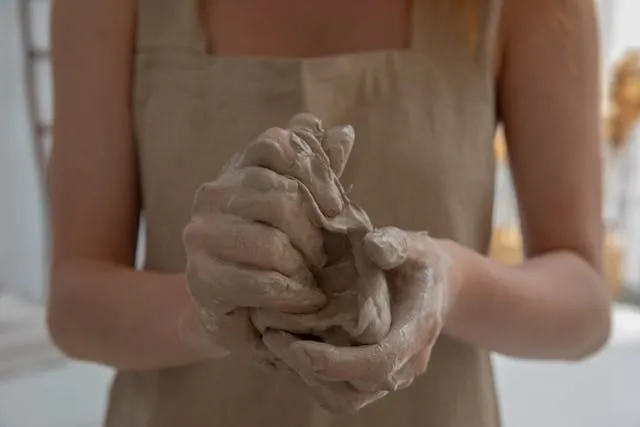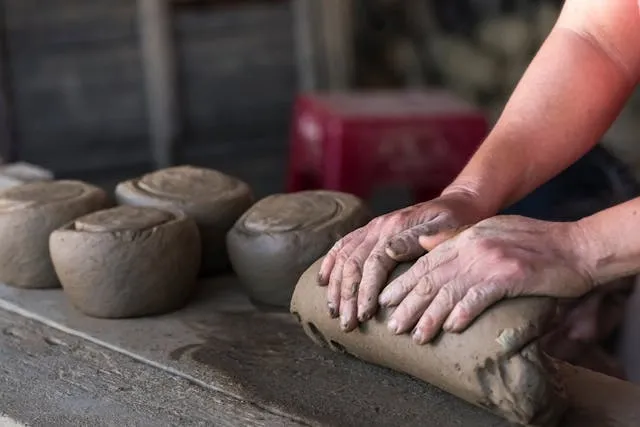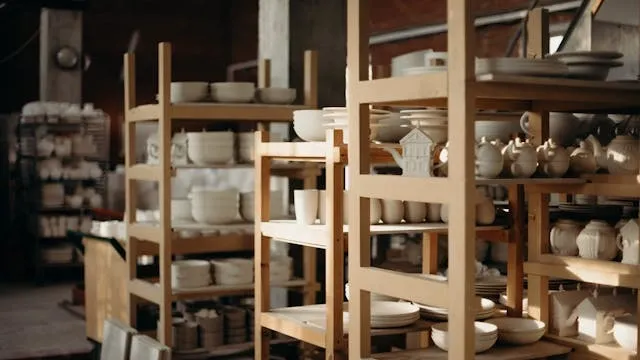Clay Coasters: Creative Ideas, Beginner Tips, And DIY Sealing Methods
Clay coasters are a creative, customizable, and stylish addition to any home. With the rise of handmade decor and social media DIY trends, more people than ever are exploring how to make a clay coaster that reflects their personality and aesthetic preferences.
In this guide, we cover everything you need to know about clay coasters DIY, including materials, design tips, and sealing methods. We also compare types like air-dried clay and oven-bake clay to help you choose the best material for your needs.

Key Takeaways
- Clay coasters are a fun and functional solution to elevate your home decor, and you can use polymer clay, air-dry clay, or ceramic clay.
- Make your own clay coasters with simple tools and household items and use oven bake clay coaster methods for swift, durable results.
- Polymer clay coaster ideas range from minimalist to intricate patterns, and you should always seal with Mod Podge or resin.
- We supply high-quality custom coasters in a wide range of materials with premium craftsmanship and bulk discounts available.
Table of contents
-
Clay Coasters
-
How To Make Your Own Clay Coaster
-
Can You Make Clay Coasters Using Oven-Bake Clay?
-
Most Creative Polymer Clay Coasters Ideas?
-
Is Clay A Good Material For Making Coasters?
-
How Do You Choose The Right Clay For Your Coaster?
-
What’s The Best Way To Seal And Waterproof Your Clay Creations?
-
How Can You Prevent Clay Coasters From Curling Or Warping?
-
Best Accessories And Tools For Coaster Making
Clay Coasters
Clay coasters are handcrafted drink rests made using various forms of clay. The most popular types include polymer clay, air-dry clay, and ceramic clay, each of which offers its own advantages:
- Polymer clay: Coasters made from this are beloved for their flexibility, vibrant colors, and compatibility with home ovens>
- Air-dry clay: This is beginner-friendly and requires no baking.
With a surge in DIY projects, clay coasters are a go-to craft for home decor, gift-givers, and creative hobbyists. They are more than just decorative - they are also functional, protecting surfaces from moisture and heat. Best of all, anyone can make them with basic tools and materials, so they are accessible even with little crafting experience.
Whether you hope to make your own clay coasters for personal use or to sell them online, they offer immense creative freedom. Alternatively, you could work with us to create custom bar coasters and other types with your creative designs for a more efficient solution.

How To Make Your Own Clay Coaster
Learning how to make a clay coaster is a rewarding process that combines creativity with functionality. Let’s look at the basic process in stages:
- Gather supplies: You will need clay (polymer or air-dry), a rolling pin, cutting tools or cookie cutters, a smooth work surface, and a baking sheet (for oven bake clay).
- Prepare the clay: Roll the clay out to about ¼-inch thick, then cut into circles or your desired shape.
- Personalize: Add texture or imprint designs using stamps, leaves, or lace.
- Dry the clay: If working on polymer clay coaster projects, bake them according to package instructions - usually around 275°F for 15 minutes per ¼ inch of thickness.
- Add color: After cooling, paint if desired.
- Seal: Finally, seal with Mod Podge, resin, or another sealant to waterproof and finish.
Clay coasters DIY projects are great for all skill levels and can create some of the best drink coasters, and the materials are widely available.
How To Make Easy Leaf-Inspired Clay Coasters
Creating botanical-themed clay coasters DIY projects is simpler than it looks. To begin, gather soft leaves like ferns or herbs along with some fresh clay - either air-dry or polymer clay. Roll out the clay evenly and press the leaf into the surface, vein-side down, to leave a detailed imprint.
Gently remove the leaf, then cut the clay into coaster shapes with a round cutter or knife. If you are using oven-bake clay, bake according to the package instructions. Once cooled or fully air-dried, highlight the imprint by brushing its surface with paint or gold wax and wipe away the excess to enhance the contrast.
Seal with waterproof glaze or Mod Podge for protection. These DIY clay coasters are great seasonal gifts, or they can pair brilliantly with rectangle table covers on your own coffee table.
Looking to create custom clay coasters with personalized designs?
With our online service, you can create custom personalized coasters from a wide range of materials and feature any design you want with professional craftsmanship.
Can You Make Clay Coasters Using Oven-Bake Clay?
You can absolutely make clay coasters using oven-bake clay, and this method is often preferred by crafters as it offers strength, precision, and a faster drying time. Polymer clay is usually the material of choice for oven bake clay coasters, as it is versatile and becomes solid and durable once baked.
Unlike air-dry clay, oven-bake varieties cure evenly and resist cracking when used correctly. Be mindful of safety tips:
- Always bake on parchment paper.
- Use a dedicated baking tray to avoid contaminating food surfaces
- Keep a close eye on the temperature and time as overheating can cause burning.
- Use an oven thermometer to maintain accuracy.
After baking and cooling, the best coaster designs are completed by sealing the coasters with a waterproof finish. This method yields professional-quality results and is ideal for beginners or experienced crafters.
Most Creative Polymer Clay Coasters Ideas?
If you’re thinking about how you can design standout polymer clay coasters, you have virtually unlimited options at your disposal. Let’s look at some polymer clay coaster ideas to consider:
- Marbling: This is where you twist different colored clays into elegant swirls.
- Terrazzo: This involved embedding clay chips into a base color for a trendy speckled effect.
- Adventurous ideas: You could try image transfers, pressed flowers, or metallic leafing for added flair.
You can make your own clay coasters in geometric shapes, mimic natural stone, or match specific home decor styles. Gradient ombré tones, checkerboards, and stamped textures can work beautifully. And you can personalize with initials, zodiac signs, or even holiday themes.
When you work with us, you can create custom ceramic coasters with any of these designs by simply uploading an image and letting us print professionally. We also offer many other materials, and you choose the shape, size, and more, with generous bulk discounts available as well.
Create your custom coaster designs and have them produced in bulk quantities
When you order custom coasters in bulk from us, you will enjoy complete design freedom, generous wholesale discounts, and no compromise on the quality of our creations.
Learn moreIs Clay A Good Material For Making Coasters?
Clay is an excellent material for coasters, especially when sealed correctly. It’s easy to shape, customize, and decorate, offering both function and visual appeal. Clay coasters made from polymer clay are particularly durable and water-resistant after baking and sealing, while air-dry clays are more porous and delicate but still viable for light use.
When exploring the best coaster materials, clay offers more artistic flexibility than alternatives like cork or wood. You can craft anything from rustic farmhouse styles to modern minimalism using polymer clay coasters or ceramic versions. The material complements an array of home aesthetics and lends a handcrafted feel to everyday essentials.
WIth the right glaze or finish, they are also heat-resistant, so they are perfect for using with hot drinks.

How Do You Choose The Right Clay For Your Coaster?
Choosing the right clay depends on your crafting goals and usage intentions. Polymer clay is a popular choice because it is easy to work with and you can get it in many colors before hardening it in a standard oven.
It is ideal for things like:
- Detailed patterns
- Complex designs
- Smooth finishes
Air-dry clay, meanwhile, doesn’t require baking in the oven and is great for simple shapes and textures. The downside is that it’s more prone to chipping or cracking, particularly if you don’t seal it.
Ceramic clay offers excellent durability but must be fired in a kiln, which isn’t accessible for most home crafters. If you want to make your own clay coasters with intricate designs or intend to use them frequently, oven bake clay is your best option. For beginners or one-off projects, air-dry clay works just fine.
There are various types of clay available to you, so choose what works for your needs.
Do you want to experiment with designs for custom round coasters?
Creating clay coasters from scratch at home can be time-consuming and difficult. With our service, you can explore custom round coasters and other shapes to create with ease.
What’s The Best Way To Seal And Waterproof Your Clay Creations?
Sealing your clay coasters is an essential step to protect them from moisture, stains, and general wear. Several methods work well, depending on your desired finish. Let’s look at some options:
- Acrylic glaze: This produces a clear, glossy look that delivers excellent water resistance and a professional sheen.
- Mod Podge: For a subtler finish, Mod Podge or matte sealers get the right look, but they may need more frequent reapplication.
- Resin: This produces a clear, glass-like finish that is extremely durable and waterproof. But it can be difficult to get the perfect finish if you are a beginner.
Whichever method you choose, make sure your clay is completely dry before you apply any sealer. Apply in thin, even coats and allow adequate drying time between layers. With properly sealed coasters, you have a better look and a longer-lasting result, perfect for use with everything from chilled glassware to hot beverages in custom glossy coffee mugs.
Does Mod Podge Make Clay Waterproof?
Mod Podge is a popular choice for sealing clay coasters, but it’s important to understand its limitations. While Mod Podge provides a protective layer that resists light moisture and dust, it is not fully waterproof, particularly with prolonged exposure to spills and condensation.
For coasters that will regularly hold hot or cold drinks, Mod Podge alone may not be enough. Instead, consider waterproof alternatives that create glossy, durable barriers for frequent use. Good options include:
- Epoxy resin
- Polyurethane sealers
That said, Mod Podge works well for decorative coasters or pieces that aren’t designed to endure heavy wear. Many crafters choose Mod Podge as a base coat, followed by a resin finish for extra durability. Just be aware of common Mod Podge coaster sealing mistakes.
| Sealing Method | Advantages | Limitations | Best Uses | Application Tips |
|---|---|---|---|---|
| Mod Podge |
|
|
|
|
| Epoxy Resin |
|
|
|
|
| Polyurethane Sealers |
|
|
|
|
How Can You Prevent Clay Coasters From Curling Or Warping?
It is not uncommon for clay coasters to warp or curl during drying or baking due to uneven moisture loss or heat exposure. To prevent this, start with an even, flat slab of clay and use a smooth, rigid surface like a ceramic tile or glass while working.
During drying, place your coasters on a flat, non-porous surface and cover them loosely with plastic to control drying speed - this helps reduce warping. Many people apply weights like heavy books or tiles to gently press the clay flat during air drying.
For oven bake clay coasters, make sure you have even thickness all over, and avoid excessive heat spikes by using an oven thermometer. These are top tips for working with polymer clay, and you can gently flatten the piece while it’s still slightly pliable if curling occurs after drying.
Proper storage and handling after sealing also help to maintain their shape.

Bring your promotional ideas to life on high-quality custom coasters
Whether you want clay coasters or any other material, our service is an efficient way to create custom promotional coasters that check all the right boxes for your needs.
Get startedBest Accessories And Tools For Coaster Making
To craft beautiful clay coasters, it can make all the difference to have the right tools to hand. Essential accessories include:
- Rolling pins for even slabs
- Cookie cutters of clay cutters for consistent shapes
- Silicone mats to prevent sticking
For texture, stamps, leaf imprints, or lace fabric add unique patterns. A clay blade or craft knife helps with precise trimming while specialized molds like trinket dish molds can elevate your design options.
For painting and sealing, quality brushes and sealers are necessary. Many crafters invest in starter kits that bundle popular tools together - perfect for beginners. If you want to experiment with polymer clay coaster ideas, consider color mixing tools and texture rollers. Alternatively, work with us to create custom drink coasters based on your designs to take the DIY work out of the equation.
Frequently Asked Questions About Clay Coasters
What Are Clay Coasters?
Clay coasters are drink coasters made from various clay materials, such as polymer or air-dry clay. They are molded into shapes, personalized, and sealed for protection.
Does Mod Podge Make Clay Waterproof?
Mod Podge can add moisture resistance to clay coasters but it isn’t fully waterproof. Resin or acrylic sealers are better for heavy use.